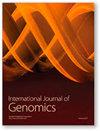综合代谢组和转录组分析揭示毛含笑花青素代谢的作用
IF 2.6
4区 生物学
Q3 BIOCHEMISTRY & MOLECULAR BIOLOGY
引用次数: 21
摘要
含笑是木兰科重要的观赏植物之一,其花色通常呈现天然纯白色。一种名为M. maudiae Dunn var. rubicunda的风铃花的发现为揭示这种“早期被子植物”的类黄酮和花青素的代谢提供了机会。对白色和红色突变体花被片进行代谢组和转录组分析。花的发育分为七个阶段,在后期鉴定出48种不同的代谢物在白色和红色花被片之间。主要花青素包括芍药苷o -己糖、花青素o -丁香酸、花青素3,5- o -二糖苷、花青素3- o -葡萄糖苷和天竺葵苷3- o -葡萄糖苷在突变体中上调了157倍以上。相反,白色花的原花青素或淡黄色的表儿茶素和儿茶素的积累非常显著。在转录组中鉴定了参与苯丙素和类黄酮生物合成途径的可能的颜色相关基因的同源物。二氢黄酮醇4-还原酶(DFR)的表达增加可能在红豆色色素的产生中起重要作用,而花青素还原酶(ANR)在白花中的过度表达可能促进原花青素的生物合成。此外,几种与颜色相关的抑制因子R2R3-MYB转录因子在rubellis突变体的被片中表现出不同的表达水平。本研究全面分析了木兰属植物颜色化合物与基因表达谱的关系。这些新发现将对木兰科植物的园艺应用产生深远的影响。本文章由计算机程序翻译,如有差异,请以英文原文为准。
Integrated Metabolome and Transcriptome Analysis Uncovers the Role of Anthocyanin Metabolism in Michelia maudiae
Michelia maudiae Dunn is one of the important ornamental plants in the Magnoliaceae family, and the color of its flowers usually appears naturally pure white. The discovery of a rubellis flower named M. maudiae Dunn var. rubicunda provides an opportunity to reveal the metabolism of the flavonoids and anthocyanins of this “early angiosperm” plant. Combined metabolome and transcriptome analyses were applied using white and rubellis mutant tepals. Seven stages have been divided for flower development, and forty-eight differentially altered metabolites were identified between white and rubellis tepals at a later stage. The major anthocyanins including peonidin O-hexoside, cyanidin O-syringic acid, cyanidin 3,5-O-diglucoside, cyanidin 3-O-glucoside, and pelargonidin 3-O-glucoside were upregulated over 157-fold in the mutant. Conversely, the highly significant accumulation of the colorless procyanidin or the slightly yellow epicatechin and catechin was found in white flowers. Putative homologues of color-related genes involved in the phenylpropanoid and flavonoid biosynthesis pathway were identified in the transcriptome. The increasing expression of dihydroflavonol 4-reductase (DFR) might play an important role in the occurrence of rubellis pigments, while the overexpression of anthocyanidin reductase (ANR) in white flowers may promote the biosynthesis of proanthocyanidins. Additionally, several coloration-related repressor R2R3-MYB transcription factors showed different expression levels in the tepals of the rubellis mutant. This study provides a comprehensive analysis relating color compounds to gene expression profiles of the Magnoliids plant M. maudiae. The newly generated information will provide a profound effect on horticultural applications of Magnoliaceae.
求助全文
通过发布文献求助,成功后即可免费获取论文全文。
去求助
来源期刊

International Journal of Genomics
BIOCHEMISTRY & MOLECULAR BIOLOGY-BIOTECHNOLOGY & APPLIED MICROBIOLOGY
CiteScore
5.40
自引率
0.00%
发文量
33
审稿时长
17 weeks
期刊介绍:
International Journal of Genomics is a peer-reviewed, Open Access journal that publishes research articles as well as review articles in all areas of genome-scale analysis. Topics covered by the journal include, but are not limited to: bioinformatics, clinical genomics, disease genomics, epigenomics, evolutionary genomics, functional genomics, genome engineering, and synthetic genomics.
 求助内容:
求助内容: 应助结果提醒方式:
应助结果提醒方式:


